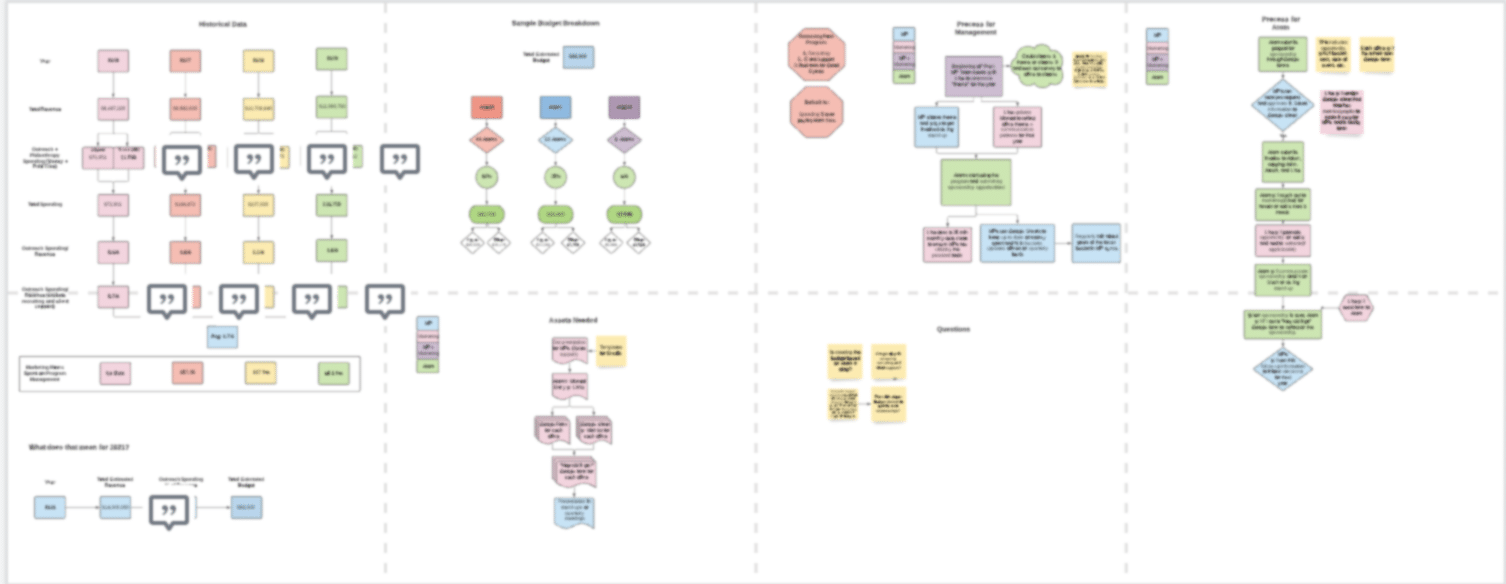I work in marketing (hey, marketing friends!), and creative, strategic projects are at the core of what I do. A lot of the projects my team and I work on touch many areas of our company. This means that they require buy-in from folks who may or may not know what we really do.
When I started at Atomic and gave my first presentation to company leadership, I came prepared for the feedback I expected I would receive, and nothing more. I had graphs, columns of numbers, little notes in the margins, a flowchart for each step of my newly proposed process, but I never stopped to think, “What do these folks actually need to know during this meeting?”
Well, that was almost two years ago, and I can say that since then I’ve learned a lot about how to take information, figure out your audience, and “pitch it” the right way. Here are some do’s and don’ts I’ve learned along the way:
1. Don’t show them everything.
Like I mentioned before, when it came time to give my first presentation to our co-CEOs, I was armed with every tiny detail about my project and only 1 hour to share it all (you can probably see where this is going). I quite literally walked into a meeting with the folks who run our company, fully prepared to walk them through every step of this document (blurred out because, you know, it’s a real project!):

Holy flow chart! By the time I had shared the high-level concept of my idea, chatted through a question or two, and opened up this document, we had 10 minutes left. Ope.
Sharing this level of insight with folks who have not been stewing in the project as you have for months is overwhelming, confusing, and incredibly time-consuming. You end up answering questions about the smallest pieces of your project rather than getting buy-in from your leadership on the high-level direction, which lets you move forward and tackle the small pieces on your own.
2. Do have your data at the ready.
So remember how I just told you not to show leadership every single piece of data and content you’ve created? Well… you should still have it handy during your meeting. There is nothing worse than getting through a presentation only to have your CEO say, “Hmm how did you get to $x? Can you tell me more about where you got that number from?”, only to realize that, yes, you do have a document that lays out that information, and no, you do not have it handy.

This leaves you scrambling and flustered (see above) and your leadership folks feeling confused and less confident. I recommend that you put together a slide deck of the high-level pieces of your idea. Here’s how I like to structure my high-level slide deck:
- Agenda of the meeting with time estimates for each section
- Goals for the meeting
- High-level concepts or themes of your idea
- A liiiiiitle bit of data (just enough to get them interested)
- Questions you have for them
- Space for them to ask you questions
While your slide deck is up on the screen, have your tabs of data and graphs ready to go for those sneaky questions I mentioned in part 1.
3. Don’t stress out if you don’t know the answer.
If you’re like me, you might be bringing projects to leadership before you’re finished, to get their approval to continue. This means that you likely haven’t yet vetted out every possible answer to every possible question.
And your leadership folks care about the company and the success of your project, so they want to offer valuable, critical feedback on the work that you’re doing. So if they ask you a question that you haven’t prepared for, try saying, “good question, I don’t have the answer to that but I will look into it!” Most importantly, don’t mistake their questions about your project for critiques on you as a person.
4. Do send a follow-up email.
The meeting has come to a close, you’ve shared your high-level concepts, and you’re saying your goodbyes. Seems like you’re done, right? Sorry… no. Your company leaders are busy people who might be attending multiple meetings like yours a week. Rather than cross your fingers and hope that they remember what you discussed, send them an email thanking them for attending the meeting and briefly reviewing what you discussed. This will help create a written copy of what you’ve discussed and offer them a space to add any additional questions.

So go forth, and share your ideas with management-level folks at your company. Have any tips that have worked well for you when you’ve presented to leadership? Share them in the comments below!

